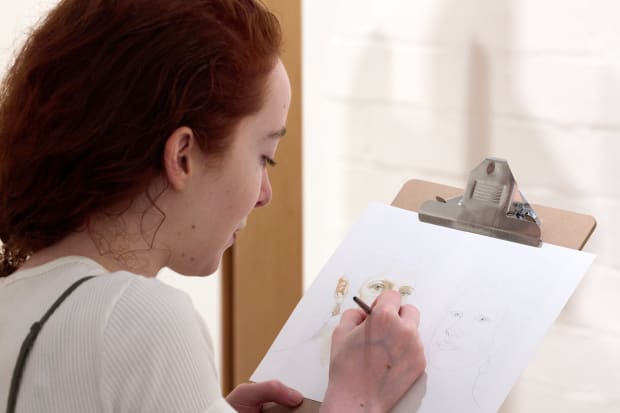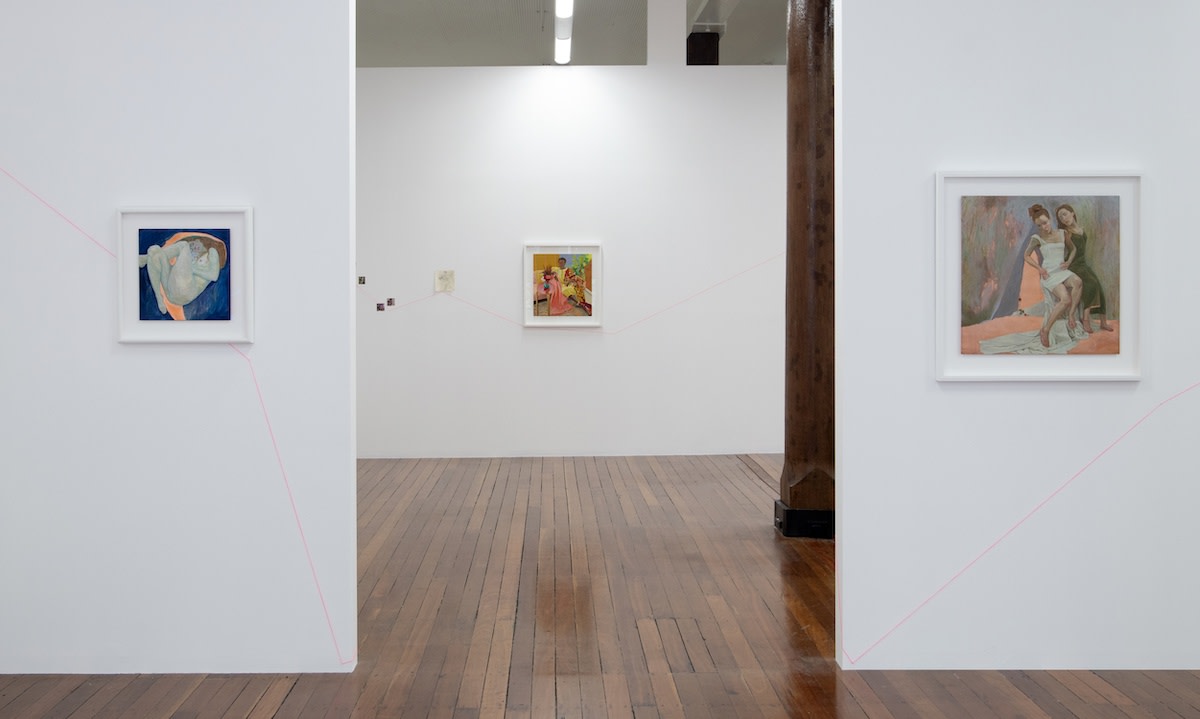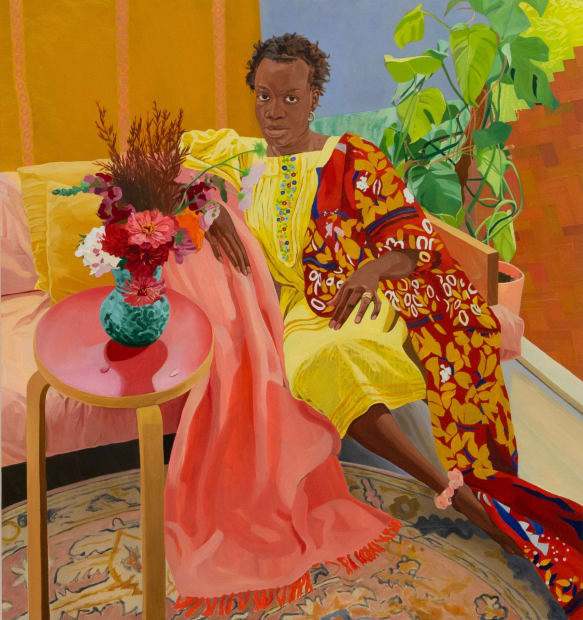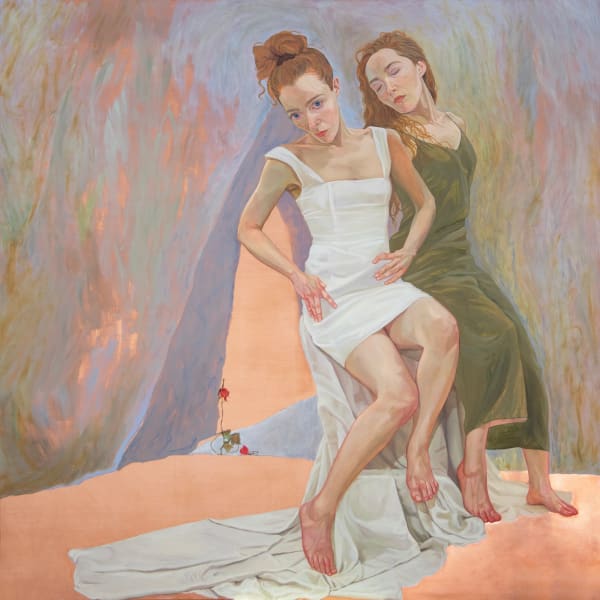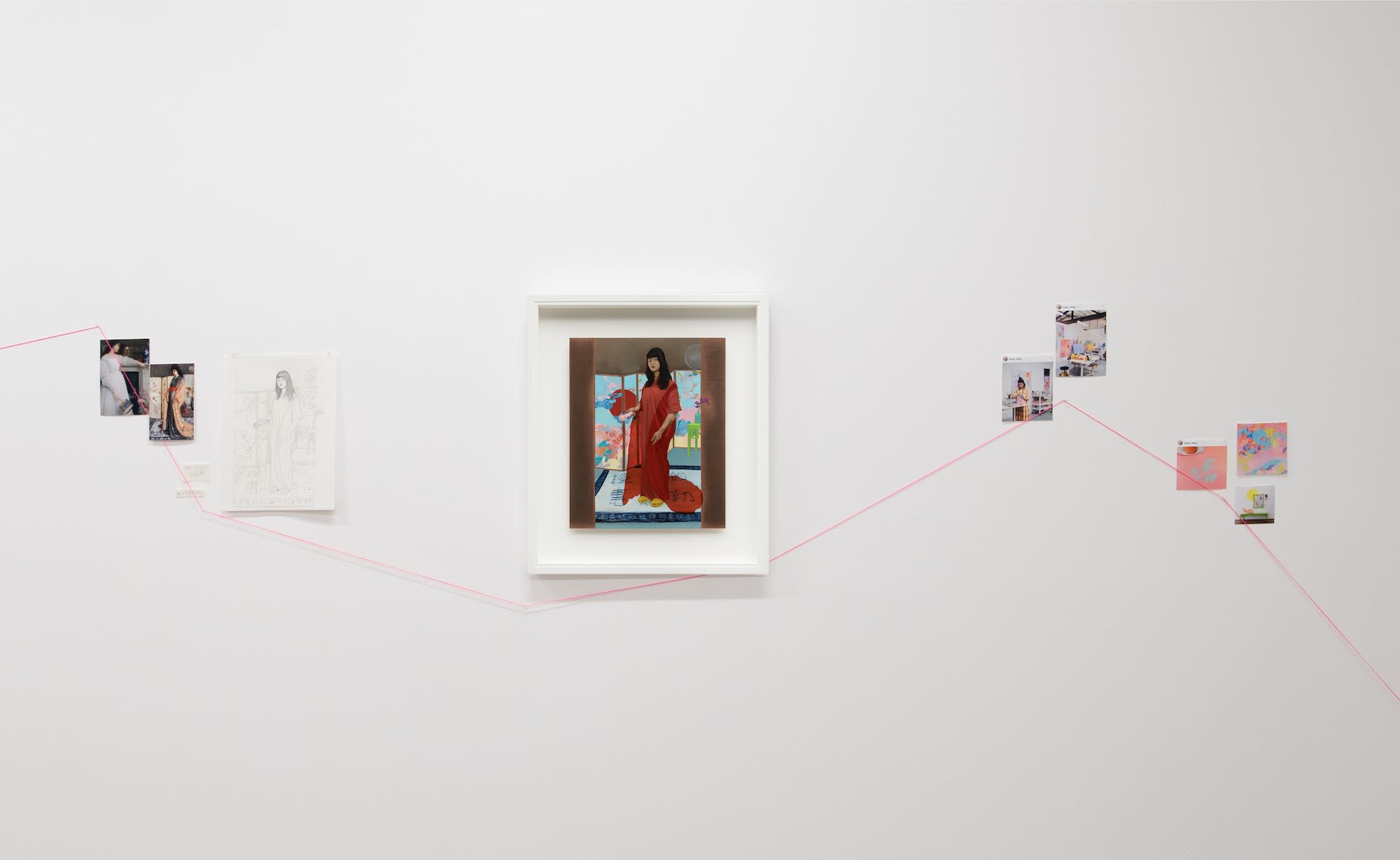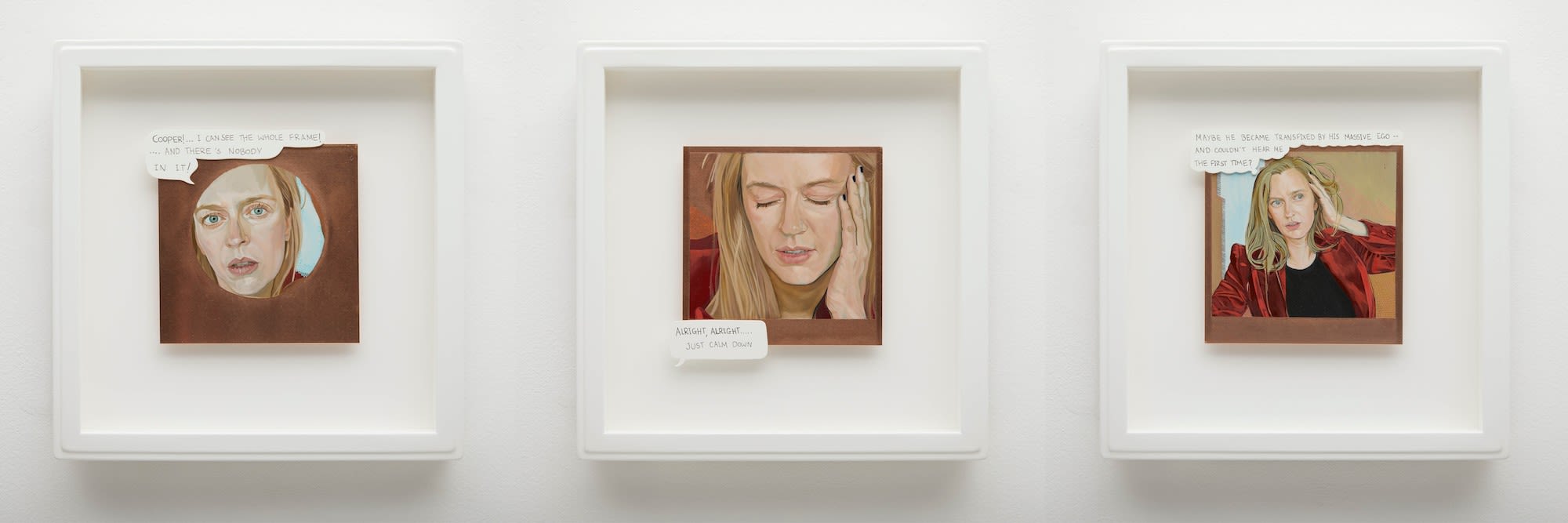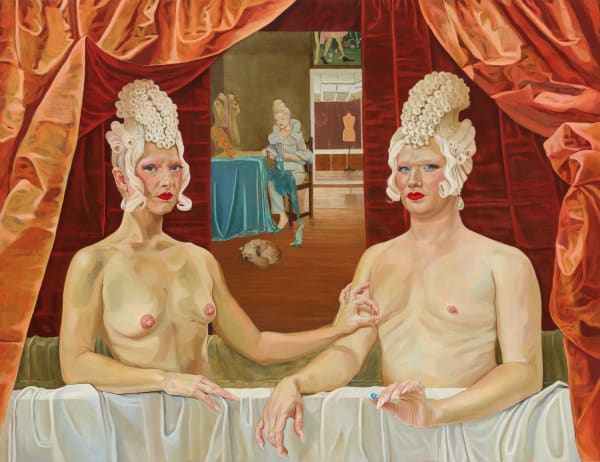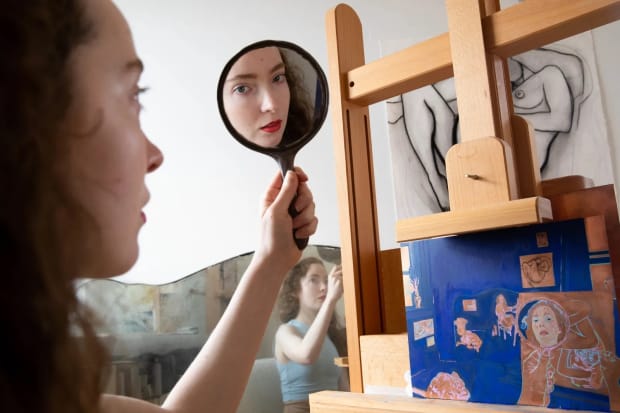-

-
 Installation view – Natasha Walsh: Hysteria, N.Smith Gallery.
Installation view – Natasha Walsh: Hysteria, N.Smith Gallery. -

-
-

-
 Installation view – Natasha Walsh: Hysteria, N.Smith Gallery.
Installation view – Natasha Walsh: Hysteria, N.Smith Gallery. -
-
 Natasha WalshDamsel in distress, 2023-24
Natasha WalshDamsel in distress, 2023-24
Sitter: Grace Otto
Reference: Roy Lichtenstein, I Can See the Whole Room...and There's Nobody in It! (1961), Tension (1964), M-Maybe (1965).
Lichenstein’s reference: Tony Abruzzo, ‘TROOPER!…I CAN SEE THE WHOLE ROOM!….AND THERE’S NOBODY IN IT!’, Scene of tension between a man and a woman, ‘M-MAYBE HE BECAME ILL — AND COULDN’T LEAVE THE STUDIO! I’LL GO SEE!’ (1950-60).
oil on copper15 x 15 cm (each)
Included in The National 4: Australian Art Now -
 Installation view – Natasha Walsh: Hysteria, N.Smith Gallery.
Installation view – Natasha Walsh: Hysteria, N.Smith Gallery. -
-
Artworks in progress.
-
 Natasha Walsh's studio installed at N.Smith Gallery.
Natasha Walsh's studio installed at N.Smith Gallery. -
Hysteria as a sitter.
By Bri LeeThere was an extraordinary rush of creative and intellectual energy when Natasha and I first met and discussed a portrait. It began with some flattery from her to me; she felt I was ‘strong enough’ to take on Picasso. He of such infamous, notorious, gratuitous misogyny. We discussed what felt important to try to capture—both in the process and the result—and decided: He cut them up, so we’ll cut him up! But it wasn’t just violence in response to violence. It was taking his wretchedness and turning it into something beautiful and brilliant.
We spoke about what we’d been chewing on. You know, what people might describe as ‘themes in our work’. I told Natasha that post #MeToo our society had made progress, coming to terms with the frequency and extremity of assaults and abuses. But that the final frontier would be a public conversation about good sex. Young people are not allowed to receive accurate information about their bodies capacity for pleasure—only pain. Parents might talk to their teenagers about rape but never say the word ‘clitoris’ out loud. I saw what Natasha had done with Louise Zhang’s portrait (all that delicious, playful subversion!) and felt safe in her hands. We set a date to get together and make some art.
Walking home from the Brett Whiteley Studio that afternoon I made notes in my diary:
And the breakthrough for me!!!!!
To go from
Subject → Object
to
Subject ↔ Subject
Zing zing zing. Feel like I might pass out for the synergy. She felt it too. Electric.
When Pablo Picasso met Marie-Thérèse Walter she was 17 and he was 45 and married to his first wife. He asked to paint her, and the relationship became sexual within a week. People call her his ‘golden muse’. There must have been some rush of feeling for them too. It was probably catalysed with flattery and somehow electric. But without being able to free himself from his need to dominate and crush he handicapped his own creative capability—and hers.
He believed ‘there are only two kinds of women: goddesses and doormats’ and so could only ever paint goddesses and doormats. He believed women were ‘machines for suffering’ and so could only ever paint machines.
There is no doubt he behaved terribly, the next important question we must ask is whether he could have painted brilliantly had he been capable of understanding his subjects’ humanity. Most of these women—Olga, Dora, Roque,
Françoise—were creatives themselves but the man was showered with glory for each new muse he crushed underfoot. When the ego wins the art loses.
So there we were, Natasha and I, with scissors and string, creating together; more than the sum of our parts. We called it ‘Our Nude’. She would have four hands and four legs and feet, one head and one vagina, but two gazes. She is fucking herself. Something no goddess or doormat or machine would do. Natasha is subject and I am subject. She is subject.
And we invite you to be subject, too. Nobody crushed. And the art all the better for it.
-

